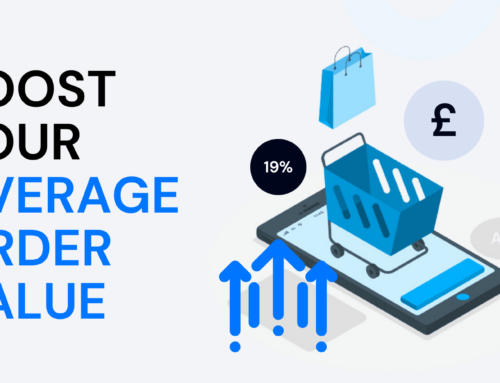Problems arise when we make assumptions that aren’t based on insights; like who your customers are and what they’re actually looking for.
Even if you know your target audience extremely well and have an accurate idea of their wants and needs, there’s only a finite amount of time to engage and satisfy them. Because according to eye-tracking research, it takes users less than two-tenths of a second to form that vital first impression.
Many assume if you don’t get any negative feedback everything must be OK. But that’s not necessarily true.
91% of unsatisfied customers who didn’t complain just abandoned the journey and that potential sale was lost (99 Firms).
The good thing is, usability testing is a great way to stop making assumptions. That’s because this method of testing can give you valuable insight into customer satisfaction and crucially, whether your message is actually resonating with them. This type of testing can help identify mismatches between customer expectations and reality, e.g premium products with a poor website could make the customer doubt the brand’s overall quality.
It can help pick up both minor and major issues and help you make a more informed decision about product development.
With all this in mind, we’re going to show you how we do it at Digivante, and, more importantly, why it works.
What is usability testing?
Usability testing is where you evaluate a product or service by putting it through its paces with representative users. This takes place over a series of tasks, with the end goal being to identify any usability problems, collect qualitative and quantitative data and generally see how satisfied participants are with the product.
What’s the difference between user testing and usability testing?
Essentially, user testing checks to see if the product works or not. Usability testing is about discovering whether a product meets customer requirements or not.
Crucially, usability tests take place with real users who measure how intuitive the product is and how easy it is to reach their goals. Like user testing, this research method can form part of a sound UX strategy. The overarching objective is to ensure users can interact with the digital product easily and without frustration.
Why is usability testing important?
With usability testing, product feedback comes from outside of the company.
More often than not, internal stakeholders are just too close to an app or website to identify website usability issues. On the other side, real users bring with them a fresh, honest and unbiased perspective. If planned in early, it allows you to learn vital information about user behaviours, needs and expectations before you’ve gone too far into development.
How does usability testing work?
The usability testing process at Digivante involves the following:
1. Hyper-targeted demographic identification
Firstly, we review whether you’d like to test with existing customers who are familiar with your digital products or new prospects that would be trying them for the first time.
We then work with you to identify the demographics that are most suitable. Some factors we’d take into consideration are:
- Age
- Gender
- Location
- Devices
Depending on your requirements, we can search for a target demographic that meets your requirements from a huge pool of testers. If we use our crowdtesting community for your project, this includes:
- Tens of thousands of professional testers
- Experts in 149 countries around the world
- Available to test 24/7 in any time zone
- Coverage of 2,987 different devices
Once you’ve decided which key demographic to focus on, the next step is figuring out what they think.
2. Net Promoter Score
Introduced in 2003, the Net Promoter Score (NPS) is a loyalty metric that’s designed to quantify the likelihood of someone recommending a company, product, or service, to a friend or colleague. Not only that, but it also determines which users could become vulnerable to competitor offers. Today, the NPS has become the industry standard for organisations looking to become more customer-centric – ideal for usability testing.
This is how it works.
Participants are asked to rank on a scale of 1-10 how likely they are to recommend the website to a friend
- Those who rank it 1 to 6 are detractors
- Those who rank 7 or 8 are considered neutral and are not counted
- Those who rank it 9 or 10 are promoters
NPS is calculated by taking the number of promoters (as a percentage) and reducing it by the number of detractors (as a percentage). The resulting score can range from 100 to -100. Any score that’s positive is considered excellent because it indicates the rate of growth is larger than the rate of drop-off. Any score that’s negative is generally considered to be bad; the closer it gets to zero the better.
Next, we build upon this data with additional quantitative research.
3. Web Usability Scale
While NPS measures customer loyalty, the Web Usability Score (WUS) or System Usability Scale (SUS) is designed to evaluate how easy your product is to use.
After the usability test, each participant is asked a set of 10 questions:
- I think that I would like to use this [site] frequently.
- I found the [site] unnecessarily complex.
- I thought the [site] was easy to use.
- I think that I would need the support of a technical person to be able to use this [site].
- I found the various functions in this [site] were well integrated.
- I thought there was too much inconsistency in this [site].
- I imagine that most people would learn to use this [site] very quickly.
- I found the [site] very cumbersome to use.
- I felt very confident using the [site].
- I needed to learn a lot of things before I could get going with this [site].
Participants are given a 1 to 5 scale to fill according to how they agree with each statement; 1 means Strongly Disagree, whilst 5 means Strongly Agree.
The standard average WUS is 68. The lower the score (compared to the average), the more important usability becomes.
NPS and WUS are undoubtedly useful metrics – that’s why we use them.
But if they’re used in isolation, these quantitative research methods can fall short of fully understanding user behaviour. Essentially, they’ll tell you what someone thinks, but they won’t give you a full picture of why they feel the way they do. That’s why we build upon this insight with more qualitative research.
4. Gathering User Thoughts
Along with quantitative insights, we also capture during- and post-experience descriptions from user reactions and feelings. But our participants don’t just capture potential issues; instead, they also identify what’s appealing in the site or app as well.
We offer selected words that we ask participants to use to describe the website or app. Words like “intuitive”, “complex”, “simple”, “informative”, “hard to use”, “modern” and so on. We ask the participants to select three words and rank them. From this, it helps to shape the overall understanding of how the site is viewed in real life and it helps indicate whether there’s generally a positive or negative view.
Alongside this, we’re bound to unearth some key issues so here’s what we do with them.
5. Analysis using Jakob Nielsen’s 10 Heuristic Principles
We ask participants to follow a defined journey and our experts then carefully examine their feedback and analyse the comments using Jakob Nielsen’s industry standard 10 heuristic principles. We put the comments and feedback under each principle and look at the overall impact on your business.
During the analysis we might find that one or two issues in particular are standing out. Or conversely that there are issues right across most of the principles. We analyse all the results and look for trends. It’s essential that any recommendations made to clients are clear about the business impact for implementing them, so that clients clearly understand and focus on where to make improvements.
You can see the impact a usability study makes to revenue and conversions this case study from TyreClick, where the results were a 37% uplift in conversion and 19% uplift in additional services upsell.
If this all sounds very comprehensive, well it is! But at Digivante, we also offer a lighter approach to usability to give you a snapshot of what your users are looking for.
6. UX and suggestion-focused exploratory test
Before going live, exploratory usability testing can determine what functionality a site or product should include in order to satisfy users. This is how it works:
- We identify a broad demographic that’s limited by country or devices
- Users test a range of different functions and are given realistic scenarios to complete
- Issues raised are limited to UX and suggestion types
- All issues are gathered and shared with the client. This includes general feedback from an internal heuristic expert who provides additional insight alongside the findings
This exercise can help highlight any mismatches between customer expectations and reality. It can find inadequacies in messaging, shape improvements in the process and illustrate where to focus design effort next. But these aren’t the only advantages of usability testing.
What are the benefits of usability testing?
There are countless benefits to usability testing your site and products. Here are just some ways it can stop you from making dangerous assumptions:
Validate your thinking – save resources and budget in the long run by bringing users into the development process. They can validate your concepts and prototypes and stop you from guessing what they’re after.
Quickly identifies complex issues – something that might seem straightforward to the internal team could be highlighted by users as a clunky process that requires too many steps in comparison to other sites.
Get to the “why” behind what’s going on – Observing users in action can reveal why they might be ignoring or missing important parts of a page.
Put yourself in their shoes – usability testing is the perfect way to see your site or services from someone else’s perspective. If you’re going to resonate with customers, you have to be able to empathise with them too.
Get the buy-in you need – without a doubt, it can be tough to drive change internally. But with video clips of users having trouble with functionality and other anecdotal evidence, it’s much easier to persuade stakeholders to change.
Ultimately, usability testing leads to better user experiences. In this digital age, it’s so important to get right.
Have you got business requirements or software releases you need support with? Our team understands how to get the most out of usability testing methods and is ready to help. Get in touch.





